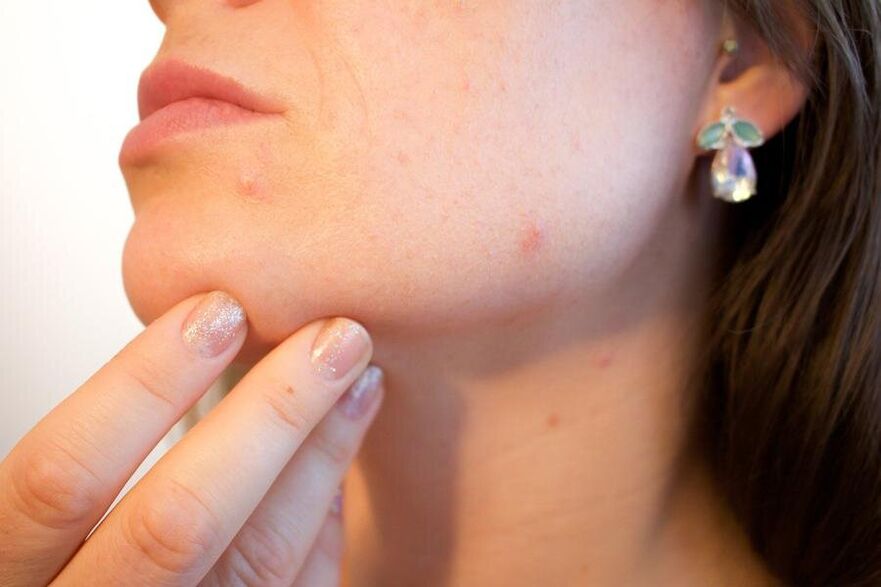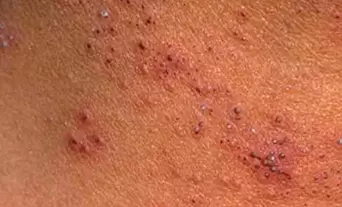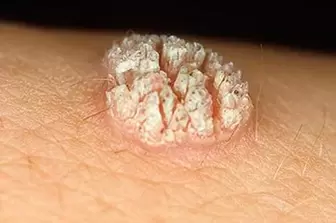For a full answer to that question, it is necessary to investigate the essence of the penetration of infection into the human body. Many experts have made a lot of effort to discover the whole nature of the emergence and development of HPV, which is so well known today. Over the past 30 years, human papillomavirus has been studied very carefully. As a result and in the process of research, more than 100 types of diseases were discovered. The type of papilloma on the body is not the same type, but malignant or benign.

HPV is a neoplasm that appears on any part of the skin or inner lining. But, unfortunately, some strains are later pathologically converted into malignant tumors. You need to know everything about this type from "A" to "Z".
Types of skin growth
The appearance of growths on the skin of the body is indicated by a decrease in the immune system. He is the one who has the function of protection, and plays the role of a kind of barrier. When certain types of human papillomavirus enter the body, immunity does not allow HPV to take root. This has been proven through studies.
Long -term medical practice has made it possible to divide all papillomas on the skin into three types:
- HPV of the non -oncogenic type (such tumors will not cause cancer, but will reduce immunity).
- The virus is not a highly oncogenic type (has a low threshold for the occurrence of pathology).
- Oncogenic risk infection (due to high threshold for oncology).
The signs of papillomavirus found on the skin are already, though not large, but cause for concern. Do not leave growth unattended (especially in the genital area). For a full understanding of the types that cause the appearance of neoplasms, you should contact a dermatologist. For a start, the doctor will perform a visual examination, and, if necessary, write instructions for further analysis and research.

Don’t start treating yourself if you don’t know the type of papilloma you have - this can lead to irreversible consequences.
It is important to consult with your doctor about prescribing antiviral therapy. Without medical treatment, papilloma removal cannot guarantee a sustainable outcome, because with subsequent decline in immunity, there is a possibility of papilloma re -formation due to viral activity.
The number of pre -existing neoplasms is in the tens. You need to figure out what a papilloma is and remember that the entire range of growths presented is divided into five categories. They are divided according to symptoms, color scheme and risk of oncogenicity. We will parse each group in more detail later. Thus, the types of papilloma are divided into 5 types.
The first type is a simple papilloma
Group I - simple papilloma. Another name is normal or abusive growth. This type of papilloma is widespread. A clear sign of the appearance of small growths on the skin. In the process of development of a papilloma of any known type, it turns into a keratinous, dark-colored tubercle. Common warts are localized on the skin, both in a single form and in whole groups. Favorite places of moles are the hands (inside and outside of the hands) and the lower part of the face (basically the lips and chin).
It should be noted that there are plantar papillomas, they are practically no different externally from gross growths, only the outer shell of keratin gives their belonging. Such warts cause discomfort when walking. Getting rid of them is not easy, but it is quite possible at home.
The second type is flat

Group II - flat papilloma. Characteristic features of the species, manifestations of the accumulation of growth groups. They practically have no bumps and have a dark color.
The growth is round, elongated, oval in shape, rising above skin level by 1-2 millimeters. Flat papillomas are located around the mouth, on the face, upper body. Sometimes papillomas form in the neck. Place of distribution - upper body. In some cases, they are observed in the genital area. Skin papillomas still belong to this group, and appear mainly in adolescence. Warts are localized on the neck, face and hands of young people. The main cause of the appearance is the failure of the immune system.
There are also papillomas on the labia, cervix in girls, penis in men, in the rectum, near the anus. These formations are arranged in groups, merging with each other. Flat flesh-colored papillomas, sometimes slightly darker than the rest of the skin, are formed under the influence of 10, 49, 28 types of papillomavirus.
The third type - pointed
Group III - pointed papillomas on the face and other areas. Another name is warts. The main site of neoplasm dislocation is the mucous membrane. Often, they affect the genitals and body, ruin its appearance, and affect everything internally. This strain is classified as an oncogenic risk. It is characterized by rapid progression from one specimen to several specimens in a short period of time. The method of penetration of genital warts is sexual intercourse. The presence of pointed moles is undesirable for pregnant women, as there is a possibility of infection in the baby. The latter can occur when a newborn passes through the birth canal.
The fourth type - filiform papilloma
Group IV - filiform peculiar papilloma on the body. In the scientific world they are called acrochords. A characteristic feature of the neoplasm is the obligatory foot that supports the mole itself. The age category is middle -aged people, and older women and men. Such growth is most often called senility.
The human papillomavirus has been growing in the body for years, and only after a while does it show itself as a wart. Sites of neoplasm formation: eyelids, neck, armpits, inguinal zone and chest area. These growths are traumatic and often, with negligence, rupture. This is a very dangerous phenomenon, so it is very important to show the wound to the doctor.
The fifth type - internal
Group V - internal moles. This subgroup includes all neoplasms that form on the internal organs of the body. These include warts located on the abdominal wall and rectum. Growth in the mouth and throat, formation in the bladder. It is the presence of condyloma of this group that cannot be identified independently, as this requires special diagnostics. But the presence of tumors gives severe symptoms. How dangerous neoplasms are for the human body, it is certainly impossible to say. Research work is conducted every year, and always provides new results.
But one thing is clear that this fact cannot be ignored. For example, a growth in the bladder can cause internal bleeding, or eventually become cancerous. Warts in the larynx interfere with respiratory function and the ability to speak. By the way, the latter can also localize in the newborn-therefore, a pregnant woman needs to be careful.
Punca papilloma
HPV is an infection that, when it enters the human body, causes all kinds of tumors. Some strains of neoplasm turn into cancerous tumors. We list the most common causes of infection:
- constant changes of sexual partners;
- the presence of bad habits (alcohol, smoking, drug addiction);
- decreased immune defenses;
- violation of physiological processes in the body;
- careless attitude towards personal hygiene (using other people’s personal belongings).
Common symptoms of all kinds
The most likely manifestation of the presence of HPV in women in the body is the external presence of growths. All characteristic features depend on the location of the neoplasm. Let us consider in more detail the obvious symptoms, depending on the type of papilloma and its type.
- Acute condyloma. It occurs on the mucous membranes of the genitals, larynx, oral cavity, on the inner walls of the stomach and rectum. On the genitals, it is accompanied by slight itching and an unpleasant odor. It is undesirable to ignore this type of growth, as oncogenic pathology can lead to adverse consequences.
- Intraductal papilloma. The original site of the duct in the mammary gland. Characteristic signs of the presence of growths: redness around the nipple, slight itching and burning. With light pressure on the nipple, ichor or greenish discharge is released. A breast papilloma is initially not cancerous, but in a neglected state it is converted into a malignant tumor.
- Plantar warts. Growth is marked by the presence of a sacrificial corn formation at its site. When walking, pressing, squeezing causes discomfort. Painful sensations are manifested in sharp and acute pain in the neoplasm zone.
- Papilloma in the esophagus. The early stages of growth are not marked by significant symptoms, but in the process of development, the symptoms increase. The voice changes, there is a feeling of coma in the throat, respiratory function is impaired. There is difficulty swallowing saliva and food.
- Flat warts. It occurs in adolescents on the lower part of the face and arms (on the outside of the hands). No severe symptoms. It's just that sometimes it's a little itchy.
Treatment of neoplasms of the skin
Having found a growth on the body, contact a specialized doctor - a dermatologist, so that the latter prescribes treatment. Do not self-medicate, as some strains are of the highly oncogenic type (this applies to both men and women).
HPV (human papillomavirus) with external signs in the form of neoplasms is not all. These tumors can easily turn into malignant tumors, and this is already dangerous. It should be noted that human papillomavirus remains in the body throughout life. As a result, it is only possible to reduce activity, or in other words, bring the infection into a "sleeping" state. But laser therapy will help to remove moles completely without pain.
Pay attention to external changes in the skin, and visit the doctor in a timely manner. Take complex vitamins and support the immune system. Follow certain rules, and health will be safe. In addition, the type of papilloma on the face, as is already known and which photos can be seen on the Internet, are different and before using the removal, you need to know the strain. Descriptions of any can be found on the World Wide Web.























